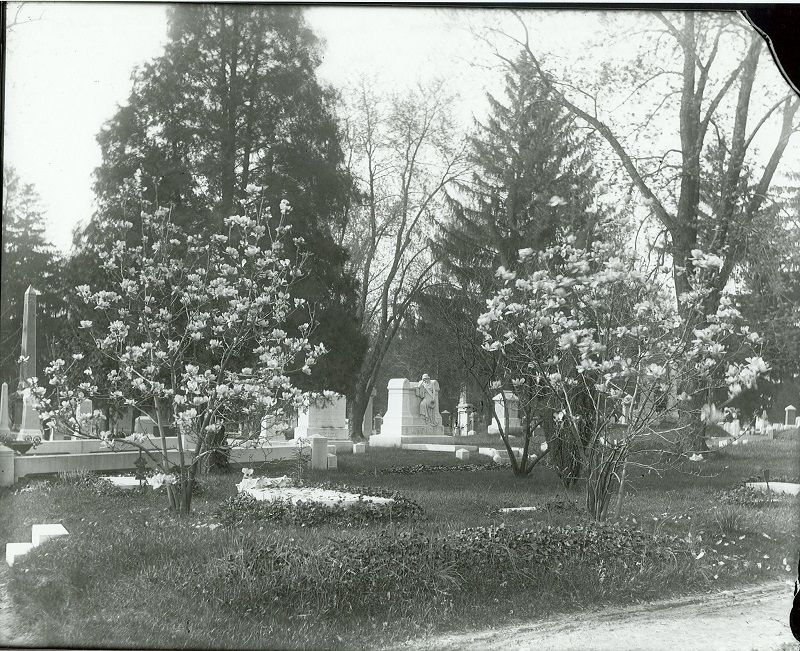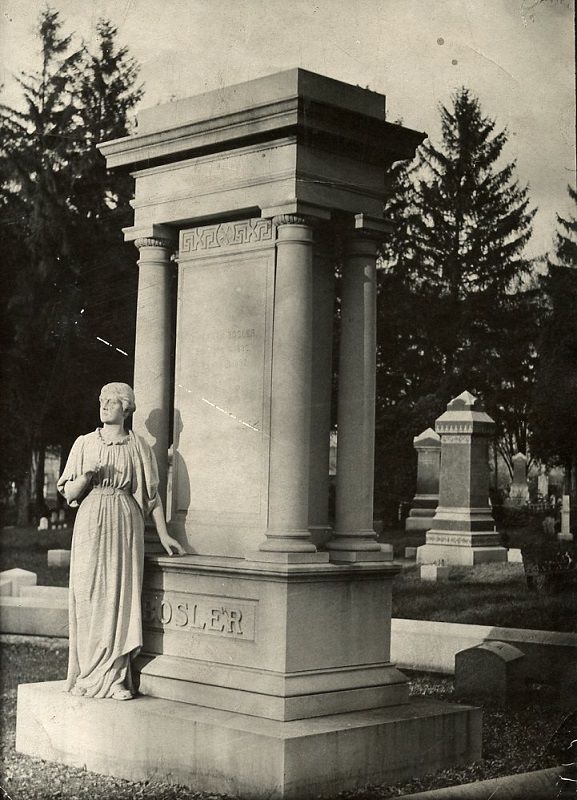Located on the York Road in the Borough of Carlisle’s east side is Ashland Cemetery. Its dedication took place October 8, 1865 with the Reverend Doctor Conway Wing giving an opening address. Wing was a respected local historian, professor and Presbyterian minister who would eventually be interred in Ashland.1 Covering twelve acres of ground the cemetery design was a series of semi-circles with paths leading to a central drive. The beauty and formal garden-park pattern was a unique cemetery setting for Cumberland County. Previously in both religious and secular cemeteries, graves were laid-out in rows facing an eastward direction. D. N. Ettinger a civil engineer from York was hired to layout and design the cemetery. His plan called for a thousand lots measuring ten feet by sixteen feet.2 Ultimately, as several older and smaller cemeteries in the Carlisle area were closed, the bodies and gravestones were transferred to Ashland.
William M. Penrose a Carlisle attorney was the organizer of this private business venture; within a year of the cemetery’s start a board of trustees was established.3 The trustees were: Penrose, Alexander Black Ewing, I.R. Eghart and General James Allen. Ewing came to Carlisle from Middletown in 1849 as an apprentice to a cabinet-maker and four years later established his own business as a cabinet-maker and undertaker. On January 30, 1952, Penrose’s last surviving daughters (Misses Ellen and Virginia) turned over the ownership and trusteeship to Seymour and William Ewing (twins) great-grandsons of Alexander Ewing.4
The northwest section of the cemetery features an unusual item, the military lot. On September 19, 1878 the United States government purchased this section and reinterred five hundred Union soldiers of the Civil War from a cemetery in Northern Maryland. Only thirty-three of these soldiers were identified. As time passed the government had other soldiers buried in this section.5
After the Civil War a small segment of the county’s families became very wealthy as a result of the industrial expansion. In turn they purchased large and impressive tombstones. Many were designed and crafted in Philadelphia and transported by rail to Carlisle.6 A few examples of the artistic stones are of such families as: Alexander, Beetem, Bosler, Givin, Goodyear, Hays, Herman, Kramer, Linder, Sadler, Todd and several others. With the coming of great business depression of the 1930s the artistic grave stones fell out of favor. The cemetery is still an active enterprise.


